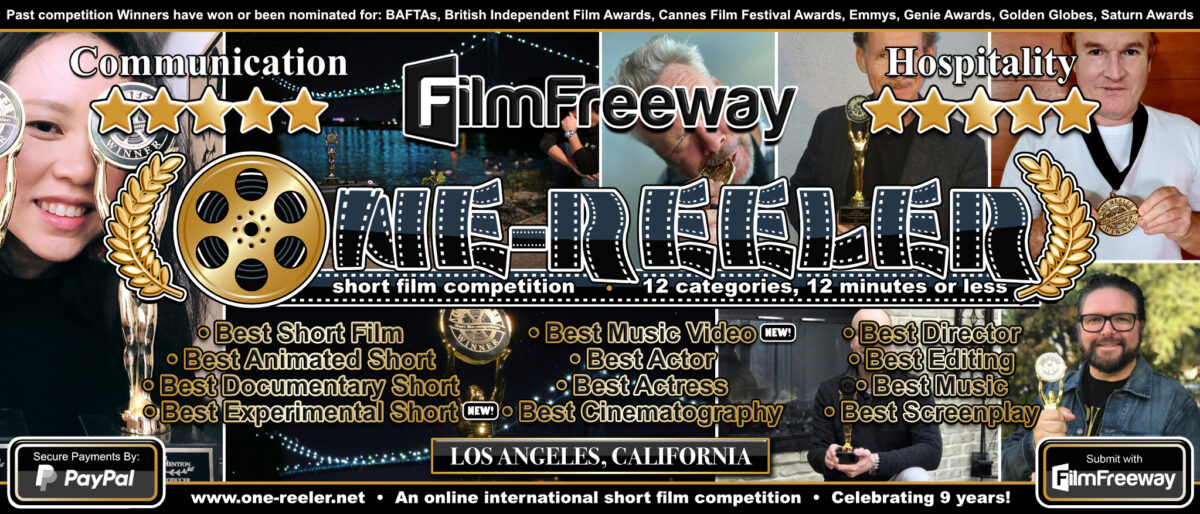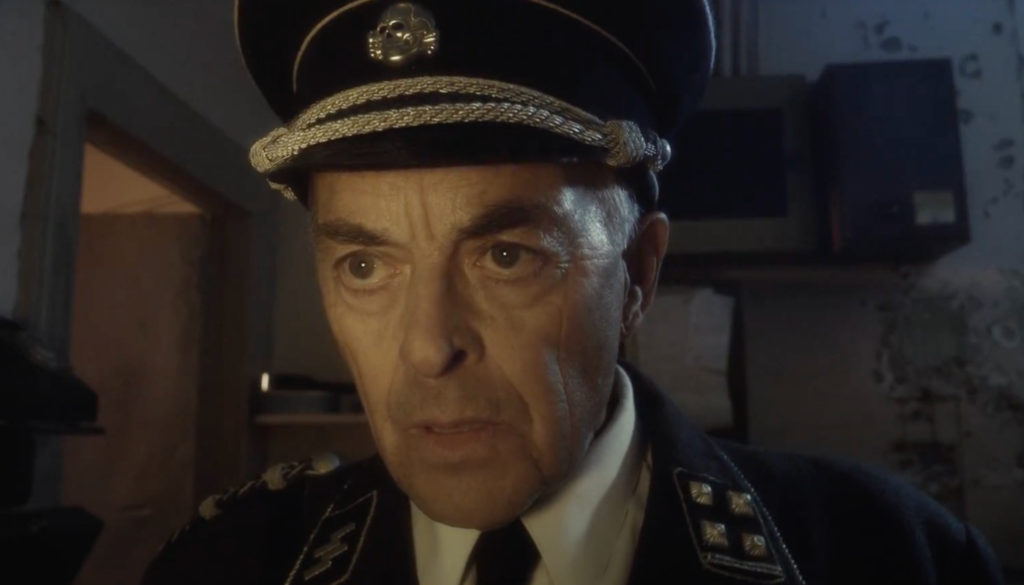Best Short Film Winners receive our stunning 11 1/2″ 24K custom gold statuette which is manufactured by R.S. Owens, the same company that manufactured the Oscar for 30 years! All Winners can purchase the award via our online Awards Order Form HERE.


Title: Kino Ratten
Runtime: 10 min
Country: New Zealand
Director: Peter McCully
Placement: Best Director – Peter McCully + Best Cinematography – Donny Duncan + Award of Excellence
Competition: June, 2020
Synopsis: In Nazi Germany, a projectionist is forced to screen propaganda films before the main features. But the rats of the cinema have other ideas. They disrupt a screening to put on a show of their own.
OR: What was the inspiration for your film?
DD: I’ve worked with the Director Peter McCully on projects before, and this was an exciting chance to collaborate with students and tutors from the Media Design School in Auckland New Zealand who spent many months producing the stunning visual effects. I was inspired by Peter’s visionary script and the challenge of pulling off this project with a very modest budget and a mostly inexperienced student crew. The idea of a period piece was also very attractive to me, and when viewing the finished film, I was blown away by the transition of scenes shot against green screen in cold warehouses to the lushly enhanced city street scenes that emerged from the VFX process.
OR: When did you conceive the idea for your film and how long did it take before it was realized?
DD: We decided the visual approach for the film would involve using a very small lightweight DSLR camera – a Panasonic GH5 – and shoot hand-held with the excellent in-built stabilisation or use a small gimbal stabiliser where appropriate. To capture the WWll period feel we lit scenes hard and contrasty and used white Promist filters on the camera to bring the softness back by halating the highlights and naturally bleeding them into the dark areas. The grading was then used to restore the blacks, which tend to get milked out, and desaturate the image to move it in the monochrome direction (but not all the way) The colour palette was chosen to contrast blue/green night exterior tones with straw/orange practical lamp sources.
OR: What was the most challenging aspect of working in a short film format?
DD: Our cinema projection booth was an actual location, although we had toyed with the idea of building a set to make it easier to work in. The space was very cramped and tiny with very limited opportunity to hide lighting sources, so most of it was lit by practical sources. The DSLR camera was certainly an advantage for the tight space and several shots were taken with the camera remoted through a phone app as there was no way to get anywhere near the camera for viewing. Ashley Turner’s art direction was a vital part of the collaboration for the look of the film, and the team at the Media Design School in Auckland rose to the amazing challenge of animating rats to eclipse Peter’s extraordinary vision.
OR: What was the most challenging aspect of your production?
DD: Limited resources meant there was lots of calling in favours to borrow equipment or negotiate nominal hire rates, but suppliers in Auckland all got behind the project. Similarly with crew – technicians were promoted to positions just outside their experience and comfort zones in order to gain a professional development experience for nominal remuneration. It was all hands on deck rigging 20 x 12 ft green-sceens for example, and every last scrap of green we had managed to source was used to provide the best coverage available and minimise the amount of frame by frame rotoscoping that the VFX students were forced to do. The large areas of greenscreen were lit very efficiently and cheaply with green tubes in Kinoflo fixtures – this also minimised the power consumption and keep the heat factor at a minimal level.
OR: Do you have any advice for first-time filmmakers?
DD: Don’t get obsessed with needing the latest, flashest equipment, but use creativity to tell the story well.
This film was shot in 4K on a $1,000 DSLR camera, with no DIT, very minimal on-set monitoring, no dolly, no grip, a set of old-school 4×4 glass Promist filters, a couple of fast prime lenses (Lumix 15mm and 25 mm), yet fellow professionals have been amazed it wasn’t shot on a Red or Arri Alexa. Having strong lighting dynamics in each individual frame, art-worthy compositions and decisive camera movement to draw the viewers attention is really important. If these factors are all in place your film will still look great if shot on a Super8 film camera or a 70’s VHS!